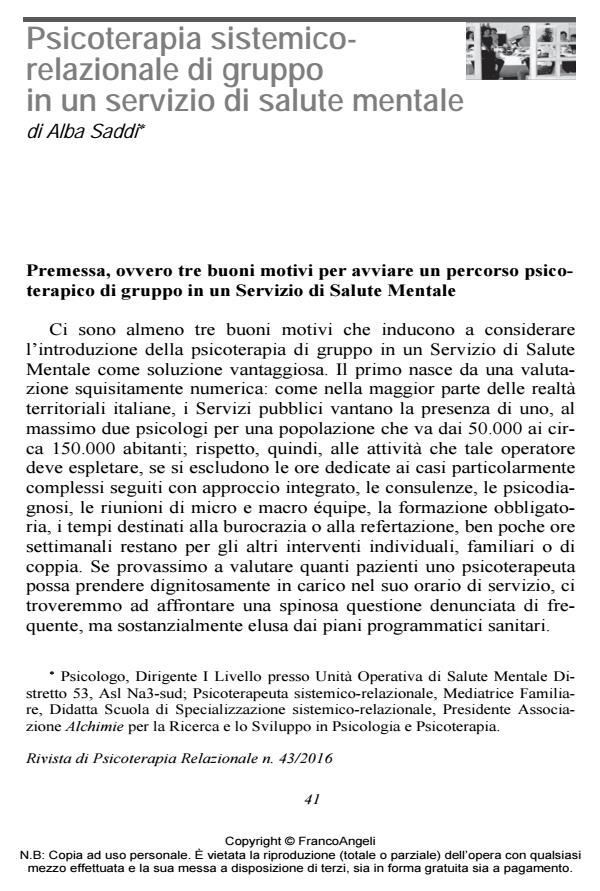Systemic-relational group therapy in a public mental health service
Journal title RIVISTA DI PSICOTERAPIA RELAZIONALE
Author/s Alba Saddi
Publishing Year 2016 Issue 2016/43
Language Italian Pages 17 P. 41-57 File size 181 KB
DOI 10.3280/PR2016-043004
DOI is like a bar code for intellectual property: to have more infomation
click here
Below, you can see the article first page
If you want to buy this article in PDF format, you can do it, following the instructions to buy download credits

FrancoAngeli is member of Publishers International Linking Association, Inc (PILA), a not-for-profit association which run the CrossRef service enabling links to and from online scholarly content.
The author exposes the experience of group psychotherapy according to the systemic-relational approach conducted at a Mental Health Service of Southern Italy, that has continued for seven years and has involved more than 50 patients in the formation of four treatment groups. Starting from the motivations that guided the choice of the setting, it explains the criteria used in setting up the groups, the rules to which participants adhere, the operating mode of the job and the type of treatment utilized. The author analyzes the most significant aspects of the therapeutic process, focusing on the role and functions of the therapist and finally supports the strong clinical efficacy of this approach, in order to avoid hospitalization, ensure compliance with therapy, experience the sense of belonging and responsibility of the personal path evolution.
Keywords: Group psychotherapy, systemic-relational group psychotherapy, mental health service.
Alba Saddi, Psicoterapia sistemico-relazionale di gruppo in un servizio di salute mentale in "RIVISTA DI PSICOTERAPIA RELAZIONALE " 43/2016, pp 41-57, DOI: 10.3280/PR2016-043004